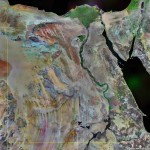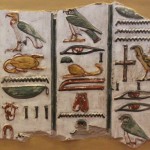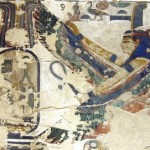The sAb in the Old Kingdom: a consideration of the title within the scope of a prosopographic study
Abstract
The article aims to give an overview of the activities of the bearer of the title sAb in the Old Kingdom and to propose a definition for it. It is based on the analysis of more than 500 documents, citing 76 titles including the term sAb and to collate all these in the titularies of the individuals concerned. It also attempts a brief description of the nature of the functions of the practitioners of justice, citing the autobiography of Weni. It further points up the connections to judicial institutions and the references to actions of a judicial nature, but also emphasises the “non-judicial” spheres involving the sAb. The article formulates a basic structure, centred round the knowledge and practice of law and orientated towards various sectors, such as the administration of the State in its diverse facets, the function of the judiciary and the management of patrimony in the great temples through specialisation. The term sAb could be the hallmark of the title holder in the field of law, but without confining him to the specific function of a sole judge. [more…]
Bloggers, Antiquities and Egypt’s Revolution
In the last week of March 2011 an UNESCO team visited Egypt to meet with the new Minister of Culture and try to understand the state of the country’s antiquities following widespread reports of vandalism, theft and looting. Egypt has seven World Heritage Sites: six cultural heritage sites and the fossilized mangroves of the Faiyum’s Whale Valley. [more…]

The Geese of Meidum
This iconic painting from the Old Kingdom Mastaba of Nefermaat and Itet is in The Egyptian Museum in Cairo and consists of three pairs of birds on one register. The right-hand central pair are universally accepted as Red-breasted Goose, Branta ruficollis, and the left-hand central pair as Greater White-fronted Goose, Anser albifrons. [more…]

The Rekhyt
The hieroglyphs of the rekhyt, Gardiner sign G23 or G24 have previously only been identified as the “black”-backed Northern Lapwing Vanellus vanellus. However, apart from its colours, the Northern Lapwing has two other key identification features, a crest and a solid black breast. [more…]
Gantenbrink’s Door – Part I: the Orginal Discovery
Although we now know that there is chamber at the end of the shafts in the Queen’s Chamber of the Great Pyramid, I still remember first hearing in the late 1990s that something had been found. The whole affair was shrouded in secrecy, back in the days when Dr. Hawass was the Director in charge of the Giza Plateau rather than Minister of State, the position he holds today. [more…]

Television Review: Egypt’s Lost Cities
“Space Archaeology” is the new buzzword adopted by the BBC in its documentary “Egypt’s Lost Cities.” Not to be confused with the branch of archaeology studying orbiting space debris, it describes instead the use of satellite images to locate archaeological remains beneath the earth’s surface. [more…]

Studying Hieroglyphs Online – Some Observations
In 2009 I signed up to study the ancient Egyptian Language online through the Glyphstudy group. The Glyphstudy group is available, free of charge, to anyone interested in studying the grammar of ancient Egyptian. There are a number of groups under the Glyphstudy banner. [more…]
Edition 1, June 30th 2011
On 30th June 2011 we will be launching the first edition of Egyptological, barring last minute glitches. We hope that you will find plenty to keep you interested. If you have comments or queries about the articles published, you can reply to any of them to start a discussion by clicking “Post Comment” at the […] [more…]
 By
By 
